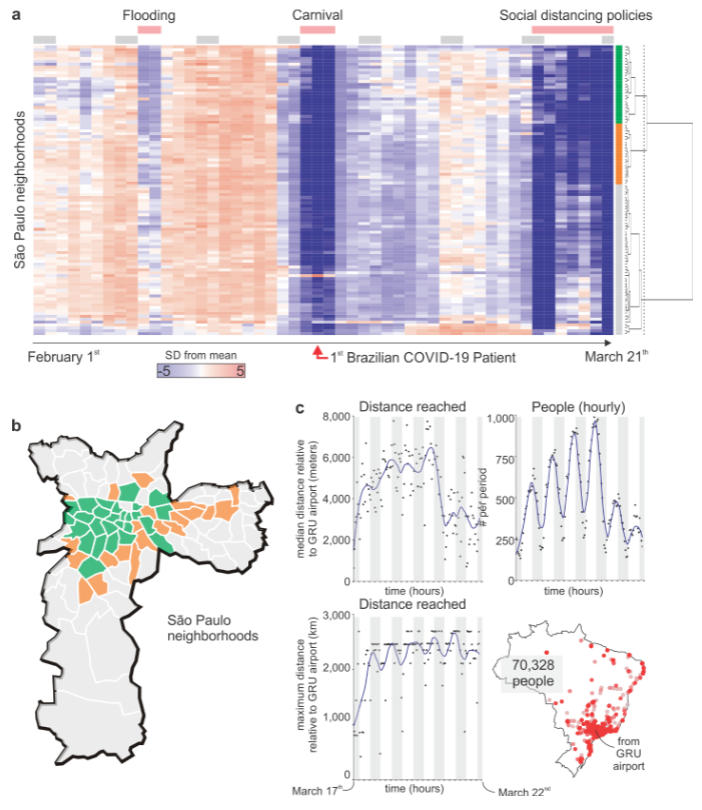Abstract:
Social distancing is an important measure to prevent the collapse of public health systems during the COVID-19 pandemic. While some countries have managed to impose a strong control for social distancing, countries like Brazil largely depend on the population’s cooperation. Therefore, it is very necessary to monitor human mobility to detect whether social distancing policies are being implemented and to adjust them in places where the population is not adhering to these. By using cell phone data of millions of people, we were able to assess the population mobility in Brazil’s biggest city, São Paulo. Our analysis revealed the reduction in the circulation of people in most neighborhoods after social distancing policies began. We also showed the dispersion of people by tracking the visits of people to the GRU airport and the visit locations of the same people after they left the airport. Over the course of a few days, it was possible to detect over 70,000 visits across Brazil, with distances greater than 2,000 km from the GRU airport. We hope that data when collected in real time can be useful to stem the progress of the COVID-19 epidemic, or at least to help “flatten the curve”.
Figure:

DOI:
https://10.31219/osf.io/nqxrd